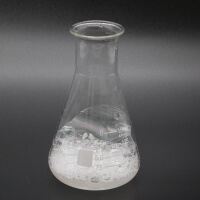Professional solutions on concrete addtives, Concrete Foaming Agent, Superplasticizer, CLC Blocks Additives, and foaming machine
(Analysis on Quality Requirements of Lightweight Concrete Partition Board)
Lightweight concrete partition board is a new type of building energy-saving product, which is made of lightweight concrete and steel bars as the main materials, processed and cured. This type of partition board usually has a thickness of less than or equal to 200mm and a weight of less than or equal to 30kg/㎡. It has advantages such as lightweight, high-strength, good insulation and sound insulation, long-lasting fire resistance, and low cost. Lightweight concrete partition panels are mainly used for the internal and external walls of high-rise frame buildings and industrial factories, which can effectively improve the insulation and sound insulation performance of buildings, while also reducing the self weight of buildings and saving energy. During the construction process of lightweight concrete partition panels, attention should be paid to their installation accuracy and fixation to ensure that their quality and safety performance achieve the best results.
Types of lightweight concrete partition wall
The types of partition walls can be roughly divided into three categories: lightweight aggregate concrete, lightweight porous (closed cell) concrete, and lightweight aggregate porous concrete. Among them, the commonly used partition wall material for lightweight aggregate concrete is ceramsite concrete, but when preparing ceramsite concrete with lower density, it is easy to cause the phenomenon of ceramsite floating due to the large density difference between the slurry and the ceramsite. For this reason, when using ceramsite concrete to prepare partition boards, it is generally adopted to use pre-wet ceramsite and introduce an appropriate amount of gas into the slurry to reduce the density difference between the slurry and the ceramsite to form lightweight aggregate porous concrete. – Ceramsite foam concrete to improve the phenomenon of ceramsite floating.
Quality requirements for lightweight concrete partition panels
The main function of the partition wall panel is to separate the space. From the aesthetics perspective, the partition wall panel should have no cracking and good surface smoothness. From the perspective of use requirements, it needs to meet certain strength, sound insulation and heat insulation requirements.
The quality of building partition wall panels can be controlled from four aspects: appearance quality, dimensional deviation, drying shrinkage and strength:
(1) Appearance quality. Refers to whether there are exposed ribs, honeycombs or through cracks on the board surface. The phenomenon of exposed ribs in partition wall panels is generally caused by improper placement of reinforcement mesh or irregular concrete vibration. The appearance of honeycombs in partition wall panels is closely related to the quality (working performance) of concrete. The poor fluidity of concrete can easily lead to the phenomenon of honeycomb pitting. In each panel, the existence of honeycombs cannot be greater than 3 places. The penetration cracks of partition wall panels are mainly caused by the drying shrinkage of the concrete itself or the demoulding of the partition wall panels after forming and human factors during the transportation process. For the through cracks in the partition wall caused by human factors, it is necessary to ensure the maintenance time or improve the maintenance method to ensure the strength of the concrete before demoulding and standardize the transportation operation process to avoid the occurrence of cracks.
(2) Dimensional deviation. The dimensional deviation mainly includes the length, width, thickness, diagonal difference, lateral bending and flatness of the partition board. The deviation is mainly caused by the forming mold. Generally, the size of the partition board can be improved by ensuring the dimensional accuracy of the mold used. Deviations are guaranteed. The excellent flatness of the board surface is the premise of realizing the thin plastering or plastering-free process of the wall. According to JG/T169-2016, the flatness deviation of the partition board should be ≤2mm. For the walls built with aerated concrete blocks, such as large real estate development companies such as Vanke, the flatness deviation of the masonry walls is controlled within 4mm. It can be seen that the partition board has a great advantage in the flatness of the wall.
(3) Drying shrinkage. The drying shrinkage of concrete is an important cause of wall cracks. For concrete partition panels, the drying shrinkage should be less than or equal to 0.50mm/m.
(4) Strength. It mainly includes the compressive strength, impact resistance, flexural failure load and suspension force of panel partition walls. Although the partition wall is a non-load-bearing component, in order to ensure the daily use of hanging items on the wall, the compressive strength of the panel partition walls is ≥5 MPa, and the hanging force is ≥1000N. The impact resistance and bending resistance of the partition wall are the prerequisites to ensure that the panel partition walls will not have quality problems, such as through cracks during transportation and installation. When the thickness is less than or equal to 150mm).
Supplier
TRUNNANO is a supplier of CLC concrete with over 12 years experience in nano-building energy conservation and nanotechnology development. It accepts payment via Credit Card, T/T, West Union and Paypal. Trunnano will ship the goods to customers overseas through FedEx, DHL, by air, or by sea. If you are looking for high-quality concrete additives, please feel free to contact us and send an inquiry. (sales@cabr-concrete.com).
(Analysis on Quality Requirements of Lightweight Concrete Partition Board)








